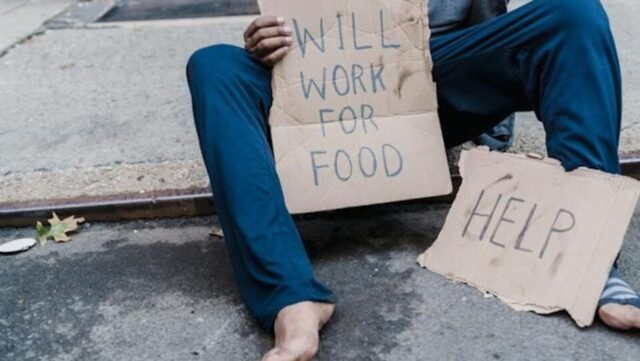South Africa has the world’s second highest unemployment rate (32.6%), with roughly eight million individuals of working age unemployed.
SOUTH Africa is still among the countries with the highest unemployment rates in the entire world.
The latest Quarterly Labour Force Survey (QLFS) by Statistics South Africa (StatsSA) showed that the unemployment rate decreased to its lowest level in a year in the third quarter, falling to 31.9% from 32.6% in the previous quarter.
This means that a total of 979,000 jobs were created.
However, this is nothing to write home about because according to the most recent International Monetary Fund estimates, South Africa has the world’s second highest unemployment rate, with roughly eight million individuals of working age unemployed, trailing only Sudan, which has 46% unemployment.
In August a glimmer of hope also appeared as Stats SA revealed that 154,000 individuals had recently found work. This totalled a decrease in the country’s unemployment rate by 0.3% to 32.6%.
However, with millions who had no jobs to speak of, things still look grim.
Many unemployed young people went so far as to remark that there was no reason to rejoice because the number of those who had found work was comparatively small.
Lindokuhle, an unemployed nursing graduate from Durban, KwaZulu-Natal, said he would be happy if at least one million people had found work.
“I doubt that these statistics are accurate. I know people who have been without employment for several years. It has only been one for me, but it feels like I still have to struggle to survive. I see no reason to celebrate,” he said.
Nomaswazi from Amanzimtoti echoed his sentiments, “Those who have managed to find jobs have been extremely lucky. I am glad that more people out there will be able to feed their families. However, I cannot find it in my heart to be happy or celebrate.”
For former nanny Zinhle, the statistics also brought little comfort. She said she did not care, because in her eyes little had changed. “Maybe it eases the government’s conscience to see some drop in the rate, but here in the real world, things are still bleak.”
Further back, in May of 2023, StatsSA announced that in the first quarter of 2023, the official unemployment rate rose by 0.2 percentage point to 32.9%.
As a result, the number of jobless individuals rose by 179,000 to 7.9 million.
According to the QLFS, 3.7 million young people, or 36.1% of the 15 to 24 age group, were not in work, education or training.
Yet the number of employed people climbed by 258,000 in the first quarter of 2023, to 16.2 million, compared to the fourth quarter of 2022.
As a result, the unemployment rate, according to the expanded definition, decreased by 0.2 of a percentage point to 42.4% in the first quarter, down from 42.6% in the fourth quarter.
At the time, economist Dawie Roodt pointed to load shedding as one of the factors contributing to the scourge of joblessness.
“What I am certain of is that the country’s economic growth trajectory does not look promising. It is likely the country will face higher levels of unemployment. So, even a rate of 40% might be possible if load shedding continues,” Roodt said.







